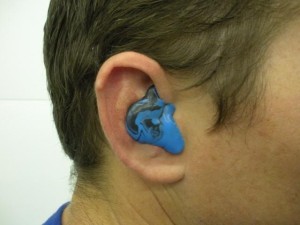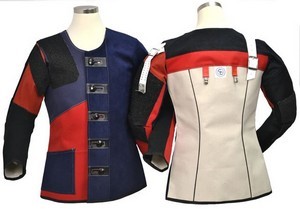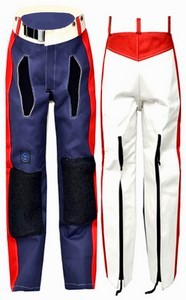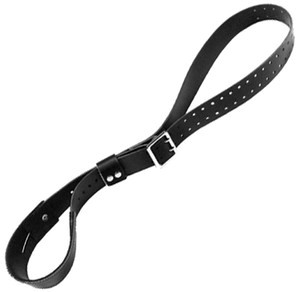The format of a typical match has not changed much since the sport was first founded. There may be some regional differences in how matches are run but this guide will give you a rough idea of what to expect and the meaning of some of the common terminology that you may encounter.
The information provided here does not replace a safety course. Safety is the most important factor in any pistol competition, so complete any educational and practical safety requirements before competing. The first step before entering the competition is being made Range Safe. This requires approval by an official from the Jamaica Rifle Association. If you have not been made Range Safe yet, see the Group Captain or Secretary discuss having this done. In addition to being made Range Safe, you must be familiar with the operation of your gun. You should be familiar with the basics of loading, unloading, magazine changes and drawing from a holster. If you are not proficient with these skills, then it is in your best interest to learn them before entering your first match.
On the day of your first match you will need to have the following items with you:
- Gun and magazines (ideally you should have at least 4 magazines)
- Ammunition
- Holster, belt and magazine pouches (holster should cover the trigger guard).
- Shooting glasses, ear-plugs and/or ear-muffs (preferably both).
- Good boots or shoes that support the ankle, hiking boots or sporting shoes are both good.
- A bag to cart all your stuff around
Once you have all that you need to get yourself to the range. Always try to arrive early as this will give you time to walk around and examine the stages before the shooting starts.
If you plan to shoot with an experienced competitor that you know then sign up at the same time as they do. Typically each match will use some kind of squads – grouping shooters together – and you will stay with that squad for the entire match and move from one range or stage to another. If you do not have anyone to help guide you, make this known at sign up, prior to the commencement of shooting, and someone will be assigned to assist you through your first match. Don’t be afraid to ask for help.
Once you have signed up, you will receive your score sheets. There will be one for each stage. Fill in your name on each score sheet.
You may only handle your gun in designated safe areas, handling it anywhere else is against the rules.
Don’t handle ammunition in the Safety Area, this is against the rules.
Magazines may be loaded anywhere except in designated safe areas. Load them up prior to the beginning of shooting so that you are ready for the start.
At the start of each match there will be a shooter’s briefing or meeting where the Match Director will go over any pertinent information that you may need. Once that is done, each stage will be described. This is called the Stage Briefing and will give instructions on the way that the stage is to be shot.
Each stage briefing will have several key points and they are listed below:
Comstock – Indicates that you can shoot as many rounds as you need to complete the course of fire or stage.
Virginia Count – You can only shoot the specified number of rounds, any more and penalties will apply.
Speed Shoot – It’s typically a fast stage with little or no movement required.
Medium Course – Not as fast as a speed shoot and may have 2 or more shooting positions.
Field (long) Course – These big stages can require up to of 32 rounds and require multiple shooting positions.
Number of Rounds – The minimum (or total for Virginia Count) rounds that will be required for this stage.
Number of Points – The number of points that are available, typically this is FIVE times the number of rounds, a twenty round stage is typically worth 100 points.
Description – This describes what you will have to do in this stage, it will include the start position, certain targets that have to be engaged from specific positions. Basically it is a guide to shooting the stage. Speed Shoots generally are more specific about the way they are to be shot, Field Stages are generally less specific.
Try to get near the front of the crowd while the briefings are being read so that you can hear what is being said and get a look at the stage. If there is anything that you are not clear about, then please ask the Match Director or the Range Officer for some clarification. There is no such thing as a stupid question.
The Match Director will usually assign the competitors to squads of equal size. Be sure to let the Match Director know that you are new and who is acting as your guide. You will be put in a squad with that person. Typically there will be a squad for each stage and each squad will hold a similar number of shooters. So if a match consists of 3 stages and there are 24 shooters then each squad will have approximately 8 people in it.
Find the folks that you are assigned to shoot with and get to that stage. Hand in the correct score-sheet for the stage. If you are not sure which is the correct score sheet ask for assistance. Everyone is there to help. We all want your first match to be safe and fun.
The walk-through is a vital part of the stage; this is the opportunity for you to walk through the course of fire as if you were shooting it. Leave the gun in the holster. Handling the gun without the supervision of an RO (Range Officer) is not permitted. If you do this, you will suffer a match disqualification which means you will not be allowed to shoot anymore that day.
If you are unsure of the best way to shoot the stage – and bear in mind there may be many different ways to successfully shoot a stage – then don’t be afraid to ask for help. We were all new at this once and everyone will happily offer advice. The trick, at least for the first few matches, is to keep it simple. Develop a plan that is simple and execute your plan correctly.
Once all the walking through is done, then it’s time to start shooting. There will be an RO (Range Officer) and a Score Keeper. These are usually people of have done a few matches and who are familiar with the rules. Some have completed extensive training to become Certified RO’s .
The Score Keeper will call out the shooting order and name the first, second and third shooter.
If you are called to shoot first, tell the Score Keeper that you would like to be moved down a bit in the shooting order. This gives you an opportunity to watch some other people shoot the stage, and perfect your plan, before it’s your turn in the spotlight.
Do not try to set any speed records at your first match, the idea is to get comfortable with the gun, be smooth and, most importantly, be safe.
All competitors are required to help ‘patch’ or ‘tape’ targets and reset steel. All competitors are required to pick up spent shells (brass) at the end of the match.
Patching or Taping – grab a strip of the target tape or pasters and, AFTER the RO scores the targets, you patch the holes.
There is usually white tape for the no-shoot targets and black tape for the hardcover targets.
Make sure that the tape is pressed down firmly.
‘LOAD AND MAKE READY’ (You may now remove the gun firm the holster, load it and re-holster. Double check your eye and hearing protection and get ready to shoot)
‘ARE YOU READY?’ (respond with a nod or yes, unless you are not ready and a NO should be spoken)
‘STANDBY’ (Simply a warning that the course is about to begin)
‘BEEP OR OTHER AUDIBLE SIGNAL’ (Draw the gun and get to the shooting!!!)
Shooter travels the stage engaging targets.
‘IF YOUR ARE FINISHED, UNLOAD AND SHOW CLEAR’. (if your are finished, you should remove the magazine, rack the slide to eject the round in the chamber and show the empty chamber to the RO)
‘IF CLEAR, HAMMER DOWN’ (release the slide and press the trigger to drop the hammer on the empty chamber)
‘HOLSTER’.
The RO will now proceed to score your targets
Follow the RO around as he scores your targets and look at where your shots are.
The RO will call out the hits and misses and any procedural errors or penalties.
The job of the Score Keeper is to capture all this data on your score sheet and total up all the hits, misses and no-shoots etc..
Check the score-sheet to ensure it is your score-sheet and not someone else’s. Make sure that the time is recorded correctly and that the total number of hits and misses totals the number of rounds on the stage. The score-sheet may remain with the Score Keeper and be turned in at the end of the match.
Usually at the end of the match, spent shells are picked up, stages are dismantled and all the props are put away. Please help to tear down the last stage that you shot, if everyone does a little then no-one has to do a lot.
While all this is going on someone will be entering all the scores into the computer to calculate who won and the final positions of every competitor.
This scoring process may take a few hours and in most cases the scores will be uploaded to the website where you can see your results. The link is shown below:
The more matches that you compete in, the more your confidence will grow. At the start it is important to focus on the basics of Practical Shooting, don’t try to set records. Focus on safety, moving smoothly and hitting the targets.
There are numerous pieces of equipment that are needed to be able to effectively compete in ISSF Sports. The sport is equipment intensive and just as with any other sport, the quality of your equipment really makes a difference and may offer a competitive edge.
Listed below are the major items that are needed to compete at the entry-level:
General Safety Equipment

Visor – This will help to shelter the rear sight from the glare of the surrounding light as well as to block out some visual distractions. It, therefore, makes it easier to focus on the target
 Ear plugs – This protects the hearing as well as blocks out unwanted noise and sounds that may become a distraction.
Ear plugs – This protects the hearing as well as blocks out unwanted noise and sounds that may become a distraction.
Rifle Equipment

Shooting Mat – The mat is the foundation on which your shooting position will be built. It offers some level of comfort and protection between you and the ground.
 Kneeling Roll – The roll is the support base for shooters stationary in the kneeling position. For shooters that shoot 3-Position Rifle only.
Kneeling Roll – The roll is the support base for shooters stationary in the kneeling position. For shooters that shoot 3-Position Rifle only.
 Shooting Coat – This is possibly the most important piece of equipment. It is made from a rigid material that supports your body’s position whilst restricting its movement. It also allows for the rifle to be attached and supported with minimum physical effort. The rubberized sections of the elbows prevent slipping when in contact with the corresponding rubber on the mat.
Shooting Coat – This is possibly the most important piece of equipment. It is made from a rigid material that supports your body’s position whilst restricting its movement. It also allows for the rifle to be attached and supported with minimum physical effort. The rubberized sections of the elbows prevent slipping when in contact with the corresponding rubber on the mat.
 Shooting Trouser – The trouser aids shooters in stability for those shooters that are stationary in the standing position. For shooters that 3-Position Rifle only.
Shooting Trouser – The trouser aids shooters in stability for those shooters that are stationary in the standing position. For shooters that 3-Position Rifle only.
 Sling – Connected to the supporting arm of the shooting coat, this simple “Belt-like” apparel bears the weight of the rifle and transfers it to the jacket and shooter position.
Sling – Connected to the supporting arm of the shooting coat, this simple “Belt-like” apparel bears the weight of the rifle and transfers it to the jacket and shooter position.
 Glove – Worn on the supporting hand to act as a protective barrier between the hand and the extreme tension of the sling.
Glove – Worn on the supporting hand to act as a protective barrier between the hand and the extreme tension of the sling.